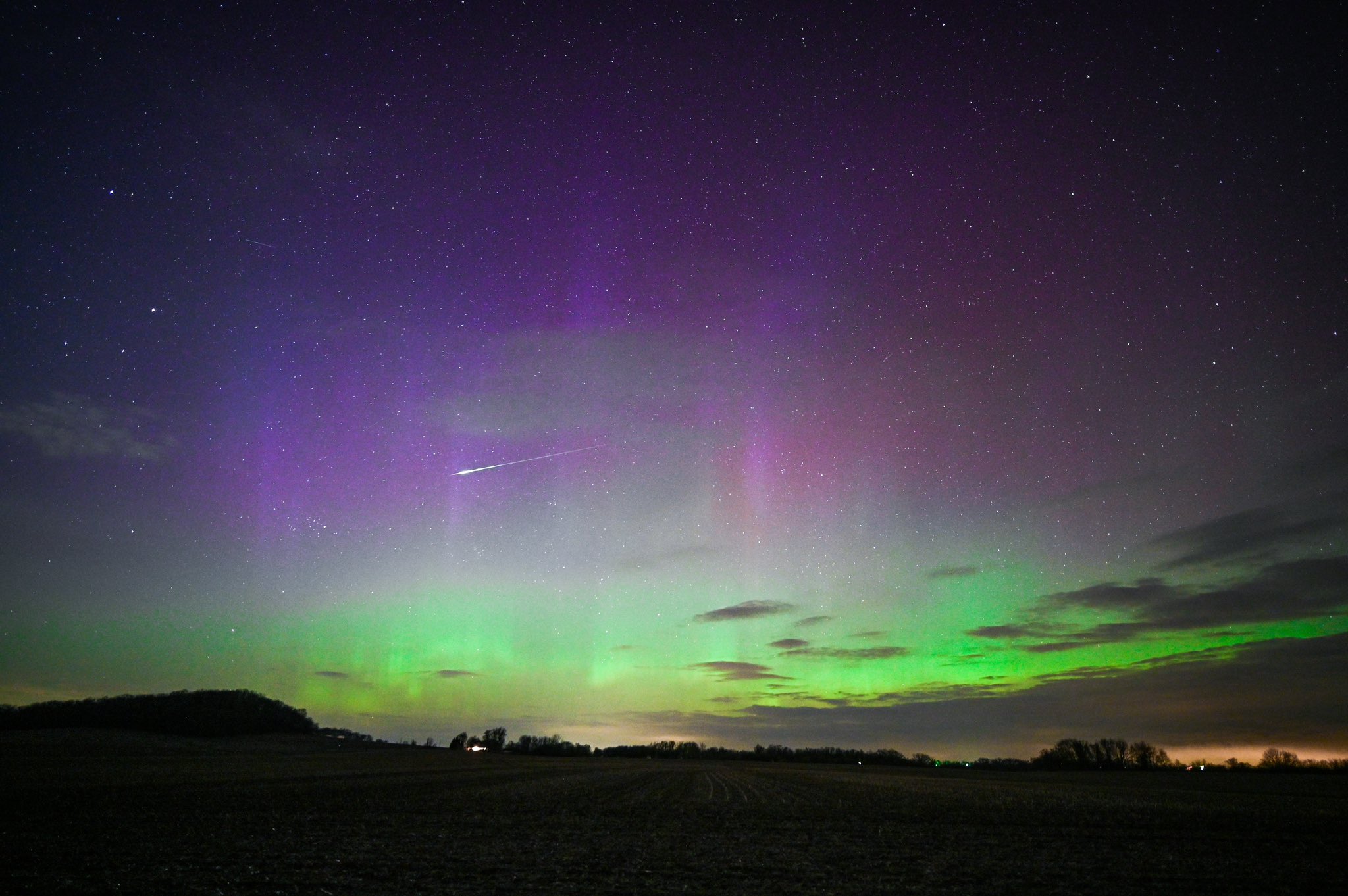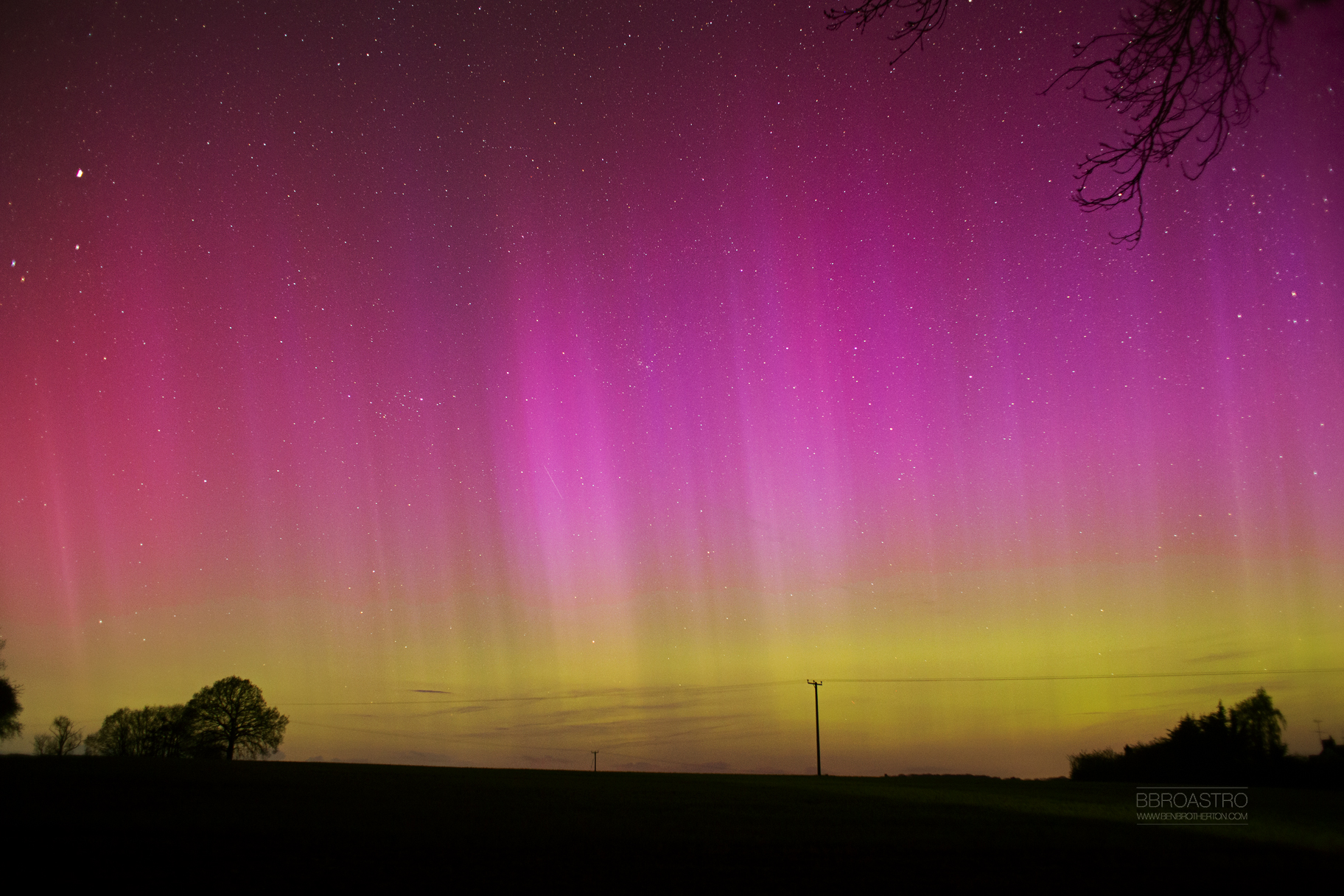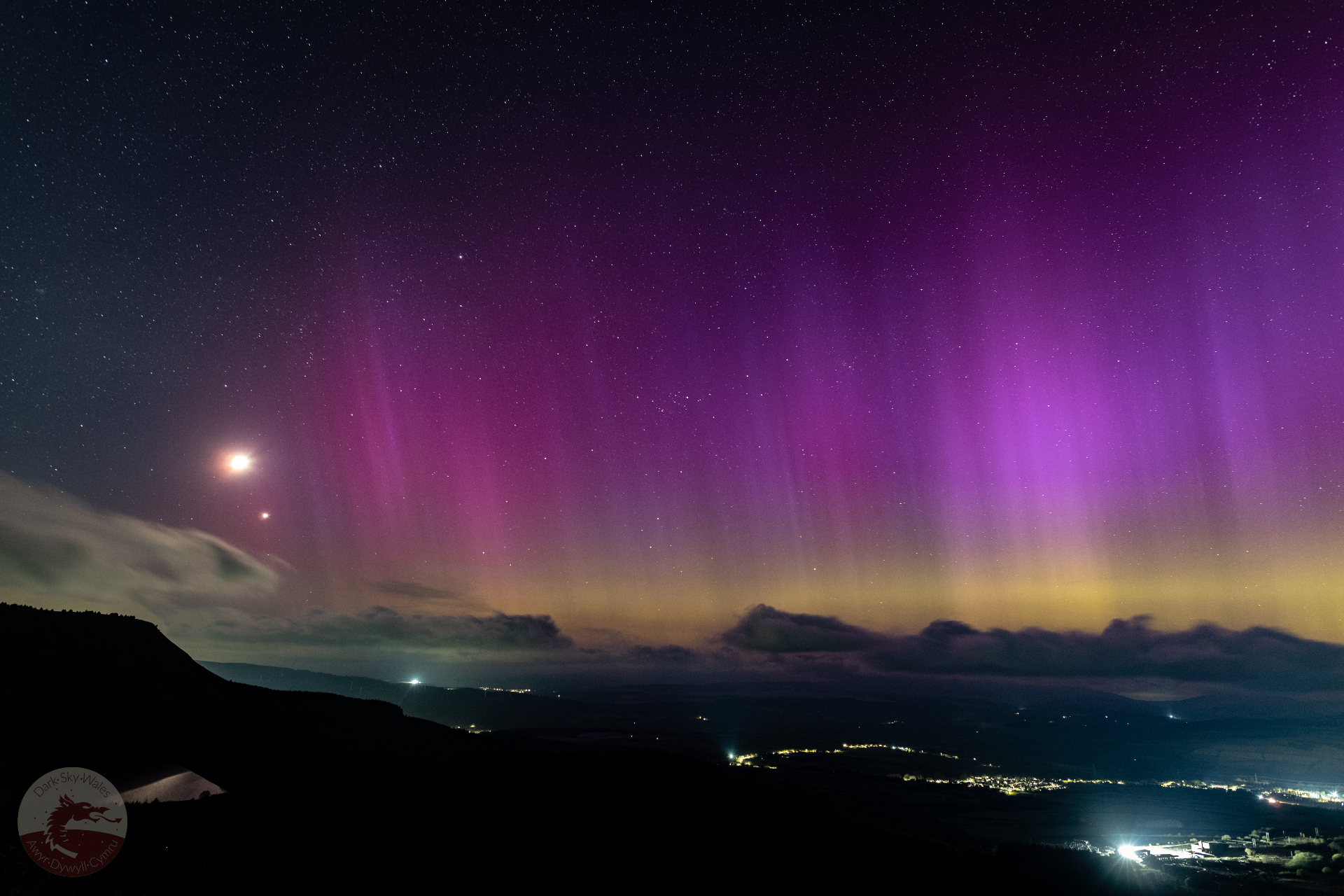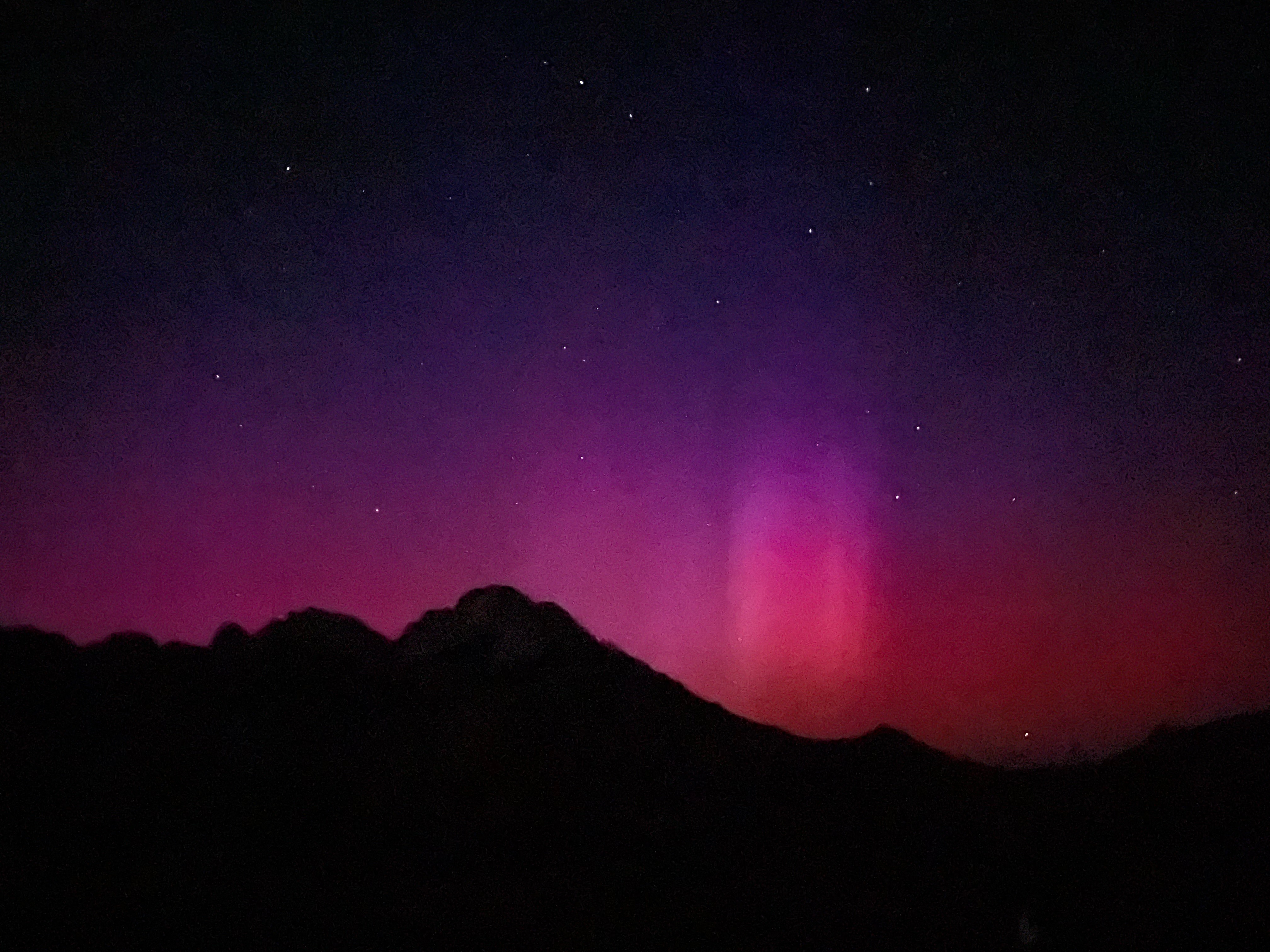Severe solar storm slams into Earth and sparks stunning auroras around the world (photos)
Dazzling aurora displays have been spotted around the world.

A powerful solar storm hit Earth on April 23 at 1:37 p.m. EDT (1737 GMT) and sparked magnificent aurora shows around the world.
Geomagnetic storms are disturbances to Earth's magnetic field caused by solar material from coronal mass ejections (CME) — large expulsions of plasma and magnetic field from the sun's atmosphere. This particular geomagnetic storm was triggered by a CME which left the sun on April 21.
The geomagnetic storm peaked as a severe G4 on the 5-grade scale used by the U.S. National Oceanic and Atmospheric Administration (NOAA) to assess the severity of space weather events.
Related: Solar activity may peak 1 year earlier than thought. Here is what it means for us
During a solar storm, energized particles from the sun slam into Earth's atmosphere at speeds of up to 45 million mph (72 million kph) and our planet's magnetic field funnels the particles toward the poles. The supercharging of molecules in Earth's atmosphere triggers the colorful spectacles, which usually remain limited to areas at high latitudes for the aurora borealis (northern lights) and low latitudes for the aurora australis (southern lights).
This time, skywatchers around the world were treated to dazzling aurora borealis displays that reached as far south as Colorado and New Mexico. In Europe, auroras were spotted as far south as France and Germany. At the other end of the scale, the aurora australis was spotted as far North as New South Wales' central west, Australia.
Landon Moeller (Twitter @landon_wx) not only captured the aurora above Apple River, Illinois, U.S., but caught a possible Lyrid meteor too!
Get the Space.com Newsletter
Breaking space news, the latest updates on rocket launches, skywatching events and more!
"I was running a timelapse on my camera at the time to capture the dancing aurora," Moeller told Space.com in an email. "Suddenly a bright white/blue meteor streaked from the east to the west through the light pillars for about 4-5 seconds before burning up and leaving a big smoke trail. It was incredible!"
Moeller's luck continued throughout the night, as the photographer managed to snap yet another Lyrid meteor streaking across the aurora-soaked sky.


Astrophotographer Ben Brotherton (Twitter @bbroastro) snapped this impressive photograph from his backyard in Herefordshire, West Midlands, U.K.
"I was absolutely shocked to see how bright and vivid it was on my camera," Brotherton told Space.com in an email.
"I have seen the Aurora before, most recently a month ago, but this time around the pillars of light were clearly visible"

Allan Trow's (Twitter @AlDarkSkyWales) stunning image from Rhigos Mountain, South Wales, U.K. shows the moon and Venus conjunction shining bright on the left side of the aurora light show.
"The night sky exploded into life around 11pm [BST] and the most wonderful auroral display emerged in front of me," Trow told Space.com in an email.
"It was great to show the people gathered nearby the colours on the camera and then the wonderful display in front of us! It made up for a cancelled stargazing experience due to clouds at our original destination." Trow continued.

Alice Hwang (Twitter @MsAliceHwang) was surprised to see the northern lights in Southern California.
My husband and I were camping in the Owens Peak Wilderness in the Southern Sierra. After the sun went down and we started to see a pink glow in the sky, we almost couldn’t believe our eyes!" Hwang told Space.com in an email.
"It was incredible and surreal to see the pillars so high in the sky at this latitude!" Hwang continued.

Despite the clouds, Edwin Mabonga (Twitter @Edwinmab1) managed to capture an enchanting mix of aurora scenes in Southland, New Zealand.
"I took these images as part of an impromptu aurora photography class I ran." Mabonga told Space.com in an email".
Mabonga invited people who wanted help in taking photos to meet outside his house. He had a mother and her three children as well as a lady in her 60s turn up with their phones.
"They were both surprised that their phones could take aurora photos and happy to have seen their first aurora," Mabonga continued. "Overall a very satisfying evening for me despite the clouds."



Kaitlin Moore saw a beautiful aurora display from Madison, Wisconsin, U.S.
The incredible green and pink/purple of the ionised gases were obvious only on the long exposure, but even with the naked eye a faint, unfurling light was visible low on the horizon," Moore told Space.com in an email".
"We are accustomed to airglow and light pollution, with a happy helping of high, hazy cloud coming off the lakes, that the fact of seeing an aurora at all at this latitude, much less one of such striking and sublime color and structure, is a testament to the strength of the solar activity," Moore continued.



Many skywatchers took to Twitter to showcase their incredible aurora photographs.
The bright city lights of Calgary, Canada did not deter the beautiful aurora light show that was captured by Kyle Brittain (Twitter @KyleBrittainWX) above the city skyline.
UNREAL!Watching the Aurora above the bright city lights of Calgary was memorable! #yyc #AuroraBorealis #NorthernLights pic.twitter.com/S1CbUmoTafApril 24, 2023
Auroras were even spotted over West Kazakhstan and shared on Twitter by Ehot (Twitter @worst_raccoon)
Aurora Lights last night over West Kazakhstan region (51 latitude) @NightLights_AM #AuroraBorealis pic.twitter.com/WEHeNxEgsGApril 24, 2023
We can expect more extreme space weather events like this powerful geomagnetic storm as the sun builds towards a peak in its 11-year solar activity cycle, expected to occur in 2025.
Inspired by these photographs and want to know how you can increase your chances of capturing the next aurora show? You can find out where and how to photograph auroras with our helpful guide. For more detailed advice, check out our guide to the best equipment for aurora photography, which includes our recommendations for cameras, lenses and tripods. Or, if you're just starting out in the field and want to know what you should be buying, read through our article on the best cameras for astrophotography.
Follow us @Spacedotcom, or on Facebook and Instagram.
Join our Space Forums to keep talking space on the latest missions, night sky and more! And if you have a news tip, correction or comment, let us know at: community@space.com.

Daisy Dobrijevic joined Space.com in February 2022 having previously worked for our sister publication All About Space magazine as a staff writer. Before joining us, Daisy completed an editorial internship with the BBC Sky at Night Magazine and worked at the National Space Centre in Leicester, U.K., where she enjoyed communicating space science to the public. In 2021, Daisy completed a PhD in plant physiology and also holds a Master's in Environmental Science, she is currently based in Nottingham, U.K. Daisy is passionate about all things space, with a penchant for solar activity and space weather. She has a strong interest in astrotourism and loves nothing more than a good northern lights chase!









